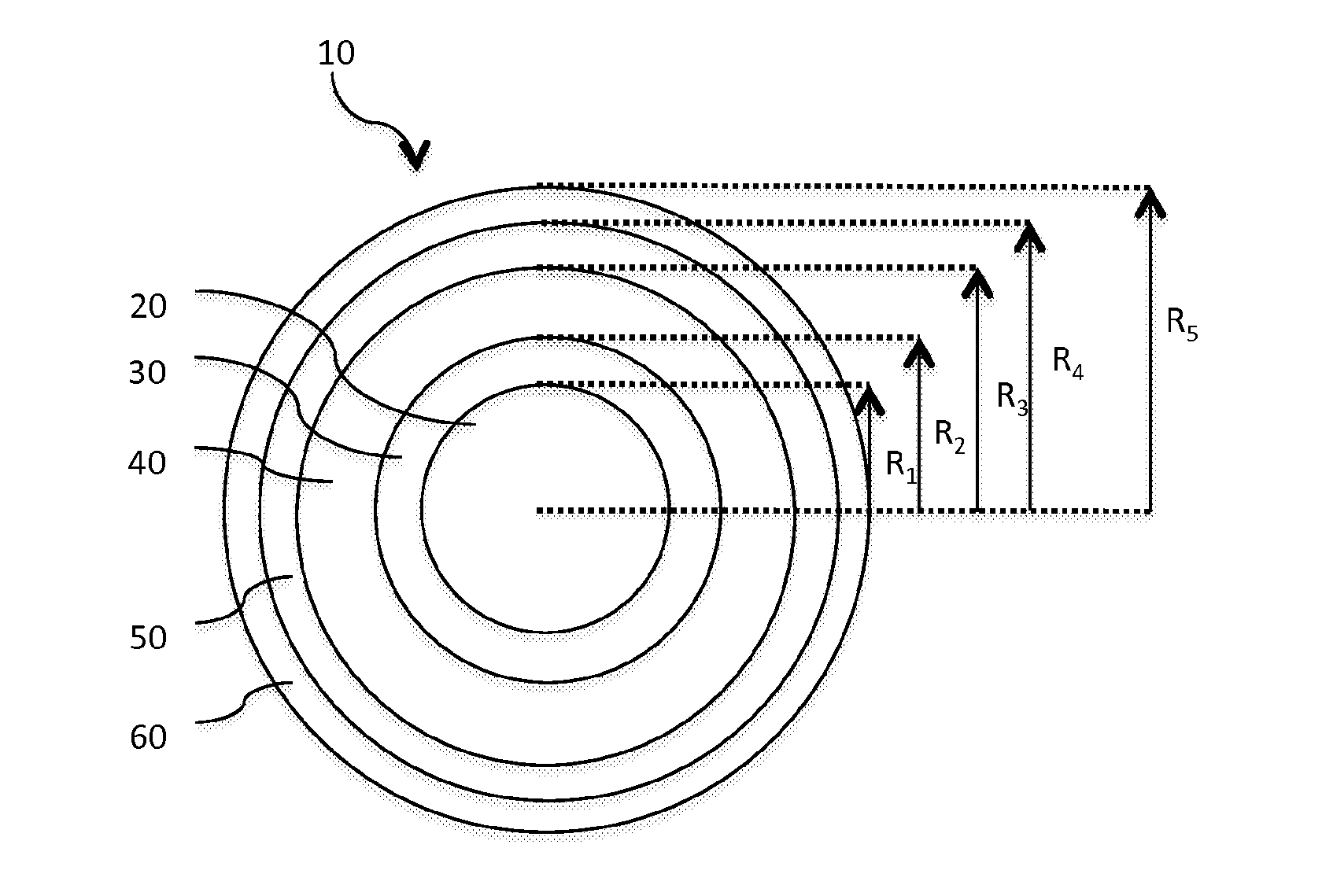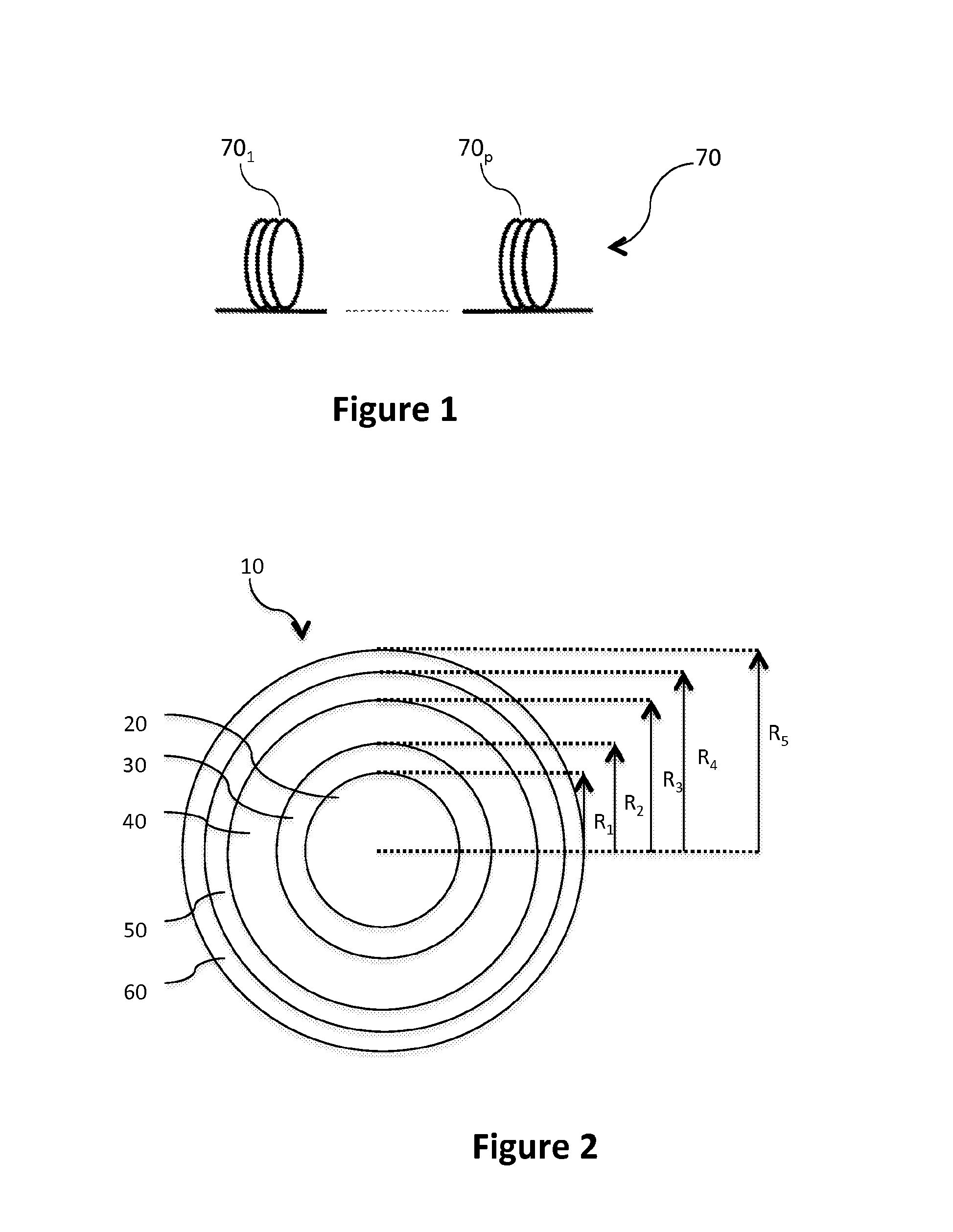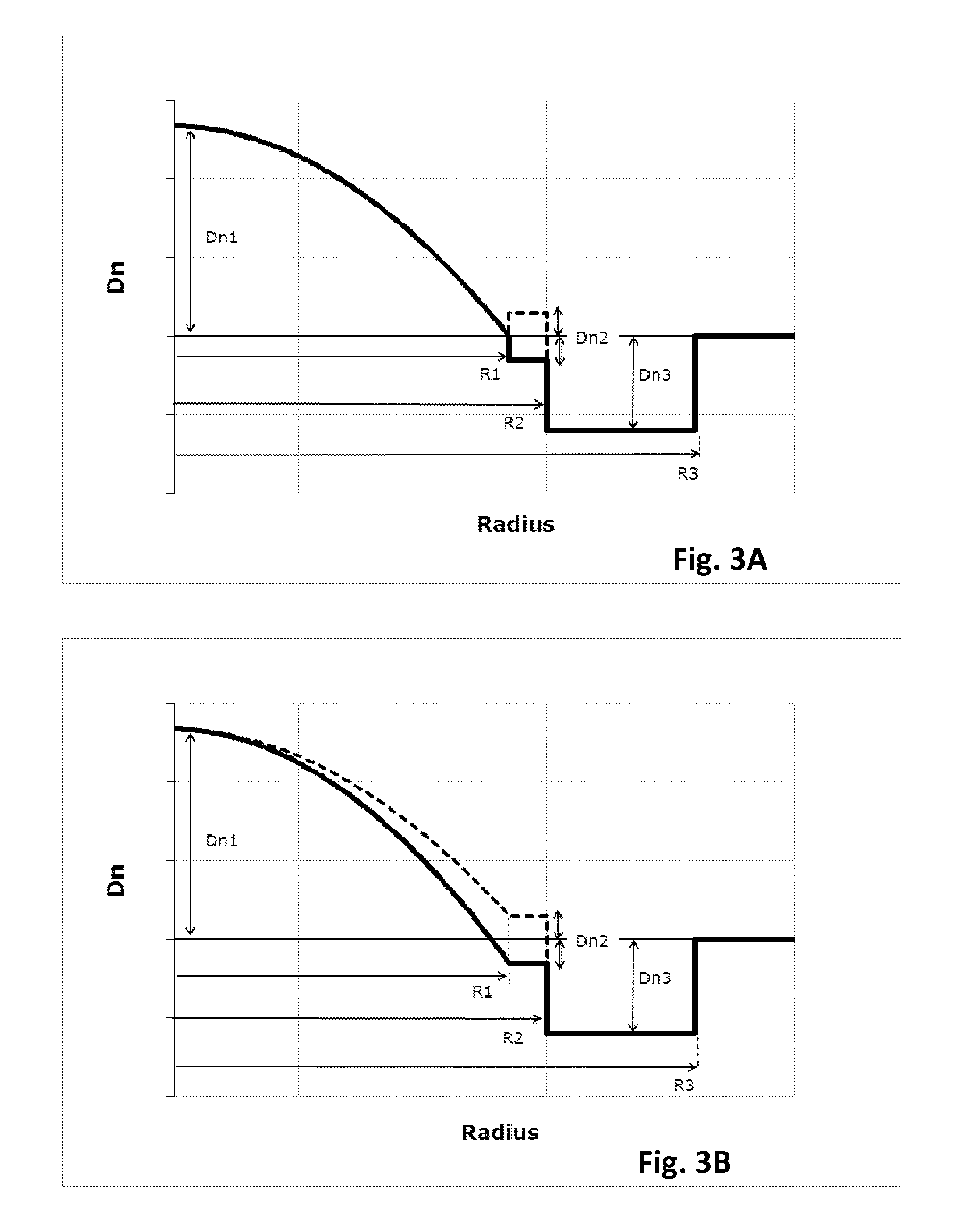Few mode optical fiber links for space division multiplexing
a technology of optical fiber and space division, applied in the field of fiber optic transmission, can solve the problems of affecting the use of multimode fibers in the long distance communication scenario, major limitations on fiber transmission capacity, and single-mode fibers suffering from nonlinear problems, and achieve the effect of easy manufacturing and low cos
- Summary
- Abstract
- Description
- Claims
- Application Information
AI Technical Summary
Benefits of technology
Problems solved by technology
Method used
Image
Examples
first embodiment
[0072]FIG. 3A depicts the refractive index profile n(r) of optical fiber 10 according to the invention. It describes the relationship between the refractive index value n and the distance r from the center of the optical fiber. The x-axis represents radial position with x=0 representing the center of the core region, and the y-axis represents refractive index, expressed as an index difference Dn unless otherwise stated.
[0073]According to embodiments of the invention, it is possible that only one, or several, or all, or even none of the optical fibers making up an optical link according to the invention show the refractive index of FIG. 3A.
[0074]In that first embodiment, the optical fiber 10 has an optical core 20 having a refractive index profile n(r) defined as follows:
n(r)=n0·1-2·Δ·(rR1)αr≤R1
where:
r is a variable representative of the radius of the optical fiber,
R1 is the optical core radius,
Δ is the normalized refractive index difference, with
Δ=n02-n122n02
n1 is the minimal refrac...
second embodiment
[0084]FIG. 3B depicts the refractive index profile n(r) of an optical fiber according to the invention. Once again, there may be embodiments of the invention where only one, or several, or all, or even none of the optical fibers in said optical link show the profile of FIG. 3B.
[0085]Such a profile differs from that of the first embodiment in that the minimal refractive index of the core n1 is not equal to the refractive index of the outer cladding nCl but may either show a negative or a positive (shown in dashed lines on FIG. 2B) refractive index difference with respect to the optical fiber outer cladding. In case the cladding comprises an inner cladding layer 30, the minimal refractive index of the core n1 is equal to the constant refractive index of the inner cladding n2, which may either show a negative or a positive (shown in dashed lines on FIG. 2B) refractive index difference Dn2=n2−nCl with respect to the optical fiber outer cladding.
[0086]Like in the first embodiment, the ou...
third embodiment
[0088]FIG. 3C depicts the refractive index profile n(r) of an optical fiber according to the invention. Once again, there may be embodiments of the invention where only one, or several, or all, or even none of the optical fibers in said optical link show the profile of FIG. 3C.
[0089]In this third embodiment, the inner cladding layer 30 is an extension of the graded index core 20, such that both the optical core 20 and the inner cladding layer 30 have a refractive index profile n(r) defined as follows:
n(r)=n0·1-2·Δ·(rR2)αr≤R2
where:
r is a variable representative of the radius of the optical fiber,
R2 is the outer radius of the inner cladding layer 30,
Δ is the normalized refractive index difference, with
Δ=n02-n122n02
n1 is the minimal refractive index of the inner cladding layer (i.e. the refractive index at radius R2),
n0 is the maximal refractive index of the optical core,
α is a non-dimensional parameter that defines the index profile shape of both the optical core and the inner claddin...
PUM
 Login to View More
Login to View More Abstract
Description
Claims
Application Information
 Login to View More
Login to View More - R&D
- Intellectual Property
- Life Sciences
- Materials
- Tech Scout
- Unparalleled Data Quality
- Higher Quality Content
- 60% Fewer Hallucinations
Browse by: Latest US Patents, China's latest patents, Technical Efficacy Thesaurus, Application Domain, Technology Topic, Popular Technical Reports.
© 2025 PatSnap. All rights reserved.Legal|Privacy policy|Modern Slavery Act Transparency Statement|Sitemap|About US| Contact US: help@patsnap.com



